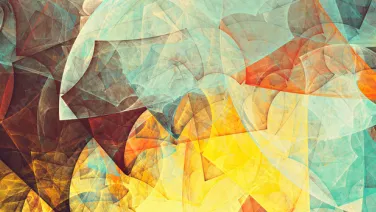
S2 2023 Honours Conference
It is time to celebrate our Honours students and see what they have been up to!
Speakers
Event series
Content navigation
Description
We have 9 students who will present results of their Honours project. Each student will give a 25 minute talk followed by questions from the audience. The schedule for the conference as well as titles and abstracts will be made available next week.
Speakers:
Jonas Palin
Tom Malcolm
Qiyu Zhou
Harry Mikula Quilty
Benedict Bawagan
Grover Lancaster-Cole
Leyao Zha
Jeff Li
Thomas Burnett
Schedule:
| Jonas Palin | 9:20 |
| Tom Malcolm | 10:00 |
| Qiyu Zhou | 10:40 |
| Harry Mikula Quilty | 11:20 |
| Lunch break | 12:00 |
| Benedict Bawagan | 13:20 |
| Grover Lancaster-Cole | 14:00 |
| Leyao Zha | 14:40 |
| Jeff Li | 15:20 |
| Thomas Burnett | 16:00 |
Schedule
09:20am
Microlocal Analysis on the Geometric Separation Problem
- Speaker: Jonas Palin
The extraction of specific components from images to enhance analytical techniques is a common objective in image analysis. A related idea is the geometric separation problem, which pertains to the separation of signals into two distinct components characterized by fundamentally different geometric structures. In this thesis, we focus on geometric separation when the geometric structures are defined by their directional properties. The first structure consists of elements exhibiting "point-like singularities," meaning they are only non-smooth at specific points, such as the sharp point of a cone. The second structure encompasses "curve-like singularities," which exhibit non-smoothness along curves, similar to the edge on the base of a cone.
To achieve separation of signals belonging to these two categories, we employ two distinct frames which act as sets of building blocks tailored for our geometrically distinct constituents. Wavelets, the first frame, are directionally independent and excel in representing signals with pointlike singularities. Curvelets, the second frame, are directionally dependent and offer a superior representation of signals with curvelike singularities. Our approach provides a systematic method for recovering each sub-signal, ensuring that each one is represented by the building blocks that best capture its geometric structure. We then implement microlocal analysis techniques in order to show that the two proposed frames satisfy conditions in which geometric separation is achieved.
Furthermore, we extend our techniques and apply geometric separation to image processing. Our method successfully separates images into two distinct components: one containing the isotropic component and the other containing the anisotropic component. This achievement unlocks the potential for geometric separation in a wide variety of applications, from advancing mapping technology to studying the intricacies of the Cosmic Microwave Background.
10:00am
Simulations in AC Tokamak Ramp Downs
- Speaker: Tom Malcolm
If you come to this talk you get to learn how a fusion reactor works (more or less), and see some cool animations.
10:40am
Extension of the classical Hawking-Penrose singularity theorem
- Speaker: Qiyu Zhou
The classical Hawking-Penrose singularity theorem predicts that under "physically reasonable" conditions, any spacetime admits a singularity (for example, a black hole or a big bang). In this talk, we discuss causal structures of spacetimes and extensions to the classical theorem.
11:20am
Introduction to Dispersion Error in SBP Difference Methods
- Speaker: Harry Mikula Quilty
I explain the basic method of using separation-by-parts difference methods to approximate initial boundary value problems, and how the inaccuracy in the method ends up inducing a dispersion relation on our approximate solution, causing different wave modes to spread out when their velocity would be constant in the real solution. This creates a source of 'dispersion error' in the approximation. Dispersion error is often dominated by a different source, truncation error which I briefly cover, but truncation error vanishes as soon as the real solution flattens, while dispersion error persists. I show how the dispersion relation can be calculated and what properties we can expect it to have, and how traditional methods cannot remove it. I finish by introducing Dual Pairing methods and briefly explaining their properties, before showing how they dissipate the dispersion error, which results in a dramatic improvement in accuracy once truncation error vanishes.
12:00
Lunch
13:20
Semisimple algebraic groups and the Demazure character formula
- Speaker: Benedict Bawagan
The Borel-Weil theorem relates the irreducible finite-dimensional representations of a semisimple algebraic group to an appropriate line bundle, converting representation theory to a geometric problem. As such, it is logical to consider what properties of these representations can be deduced from this geometric point of view. In this talk, we discuss the Demazure character formula, which gives a complete characterisation of the structure of the irreducible representations. We provide an overview of the proof using Schubert varieties and the Bott-Samelson resolution.
14:00
Quiver Representations and Coxeter Groups
- Speaker: Grover Lancaster-Cole
Quiver representation theory is typically studied by considering a Weyl group action on the integer lattice and its root system. This translation is made possible by the construction of reflection functors, and can be used to classify the representation type of quivers by simply laced Dynkin diagrams. Abstractly, the Weyl groups are examples of Coxeter groups, which are classified by the Coxeter-Dynkin diagrams. We discuss a generalisation of quiver representation theory which categorifies the combinatorics of all root systems associated with finite Coxeter groups.
14:40
Algebraic knots and links
- Speaker: Leyao Zha
Given a convergent power series map $f:\C^2 \rightarrow \C$, its zero locus $\{(x,y)\in \C^2:f(x,y)=0\}$ defines a curve $C$ in $\C^2$. Given a point $p$ on the curve, we wonder: what is the local topology of the curve at $p$?
When the partial derivatives $\frac{\partial f}{\partial x}$ and $\frac{\partial f}{\partial x}$ are not both zero at $p$, we know that the curve is "smooth", it is locally a smooth manifold of complex dimension 1 by the implicit function theorem. But what happens when the point is singular, i.e., both partial derivatives vanish at $p$?
A wonderful theorem by John Milnor states that, the local topology of the curve $C$ at $p$ is uniquely determined the intersection of $C$ with a sufficiently small sphere $S^3_\epsilon$ centred at $p$. The intersection $C\cap S^3_\epsilon$ is a smooth 1-manifold, which is a link. When the function $f$ is irreducible, the intersection is a knot! These types of knots and links are called algebraic knots and links.
In the talk, we will study the local topology of the curve by looking at the algebraic knots and links from a knot theory perspective, and classify such knots and links, hence the local topology of the curve, through algebraic invariants of the curve.
15:20
The word problem of Zn is multiple context-free.
- Speaker: Jeff Li
Multiple context-free languages are a class of languages which is a generalization of context-free languages, where it is possible to apply context-free-like rewriting rules in multiple locations in the same string. This extensive class of languages coincides with the word problem of free abelian groups Zn.
16:00
Persistent Homology Statistical Shape Recognition for Fingerprint Biometrics
- Speaker: Thomas Burnett
For a geometrically defined filtration $\emptyset \subseteq \cdots \subseteq X_i \subset X_{i+1}\subseteq\cdots \subseteq X$ of a geometrically realised topological space $X$, one may apply a homology operator $H_k$ to retrieve an interesting algebraic structure which captures the topology and geometry of $X$. The induced maps on homology from inclusion tell a non-trivial story of the homology components being born, persisting to live, and inevitably dying (in the extended case). In this talk we will use \emph{Persistent Homology} to distinguish images of human fingerprints for biometric recognition. On our journey of Topological Data Analysis, we will bring in other areas of the mathematical sciences as required, including signal processing, digital topology, optimal transport, and statistics.
Location
Seminar room 1.33, Mathematical Sciences Institute, #145 Hannah Neumann Building, Science Road, The Australian National University

